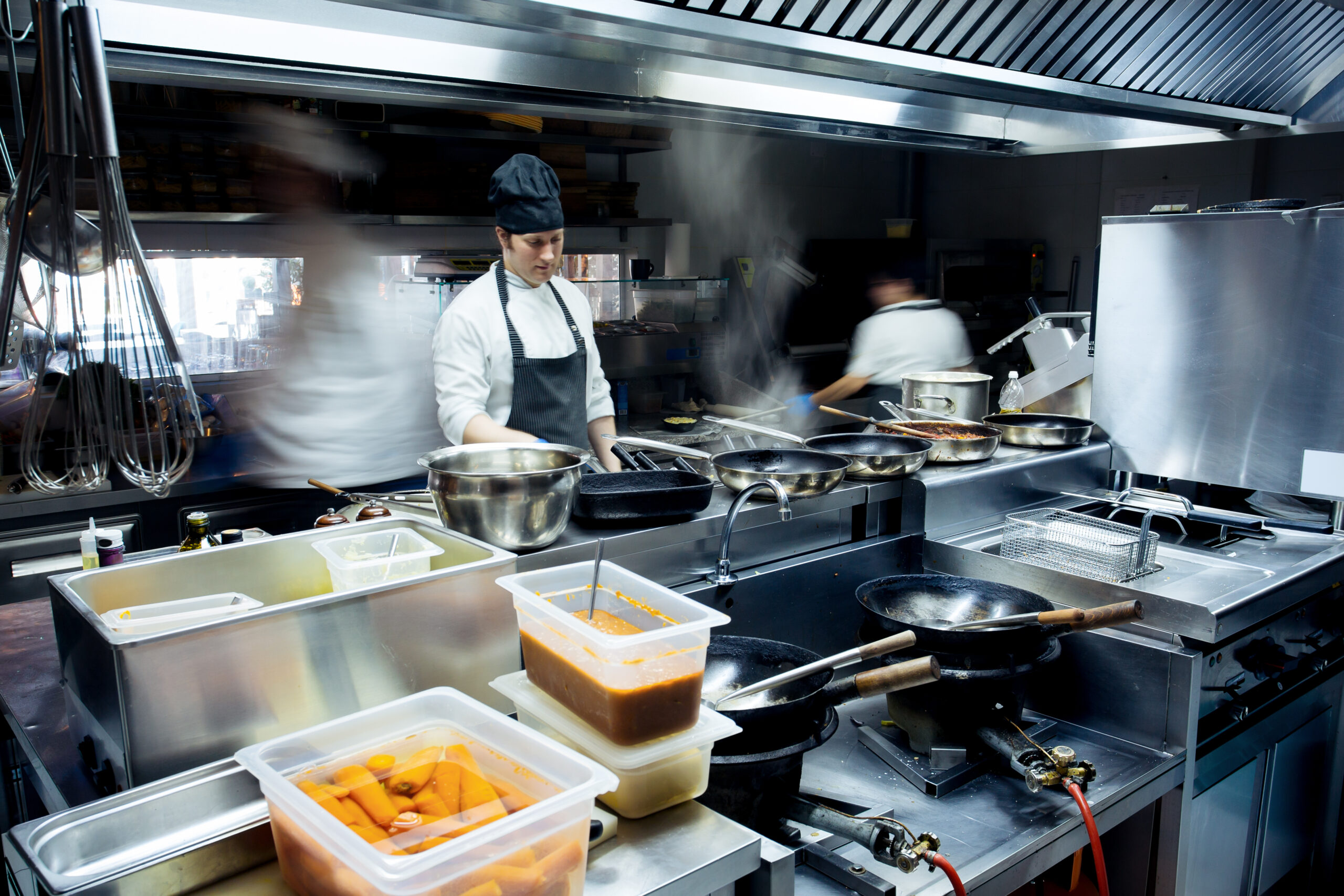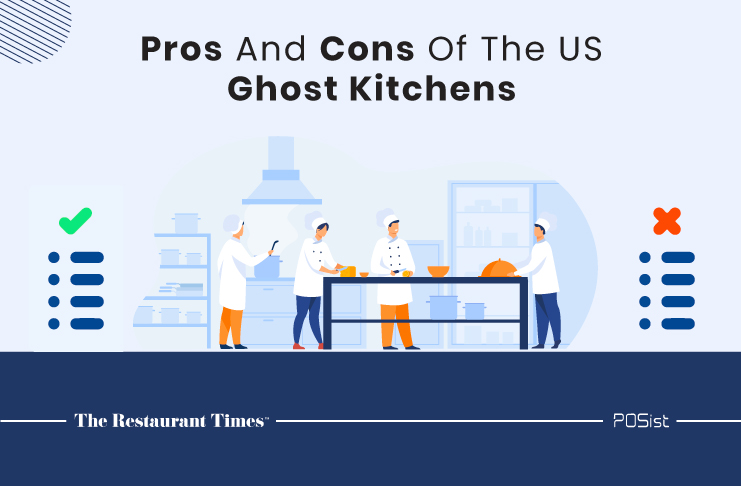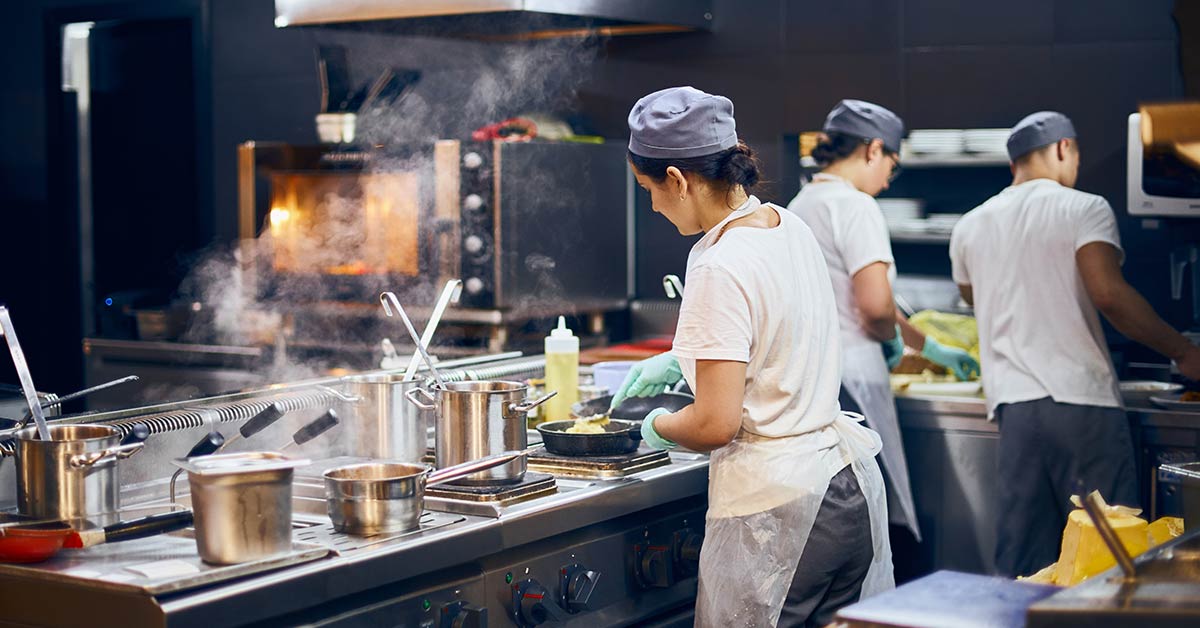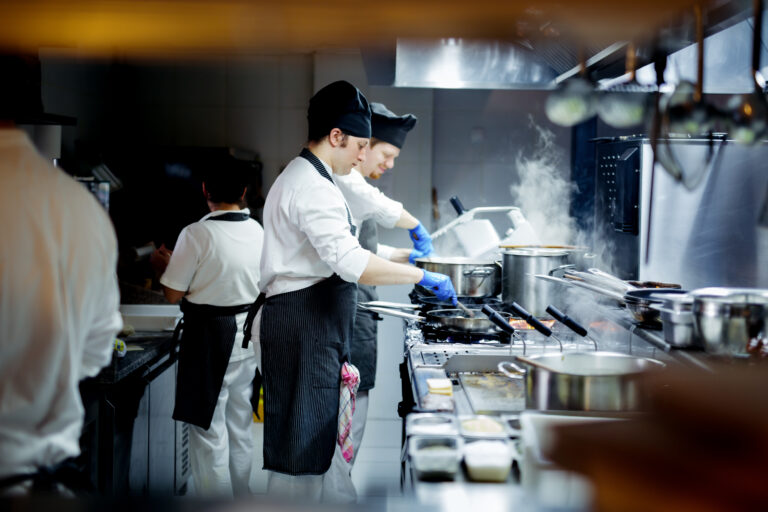
What's the difference between virtual kitchen and ghost kitchen
As the culinary landscape continues to evolve, two innovative concepts have emerged to redefine how food is prepared and delivered: virtual kitchens and ghost kitchens. While they may share some similarities, they serve distinct purposes within the modern dining experience. Let’s dive into their definitions, helping to clarify the nuances that set them apart.
Definition of Virtual Kitchen
A virtual kitchen, often referred to as a cloud kitchen, is a cooking facility that operates without a traditional dining area where customers can eat on-site. Instead, these kitchens focus exclusively on fulfilling online food orders through delivery platforms.
Imagine the bustling kitchen of a contemporary restaurant, but without tables, chairs, or patrons. Instead, the chefs whip up gourmet meals destined for delivery, optimizing their operations for speed and efficiency.
Key features of virtual kitchens include:
No Physical Dining Space: The absence of a dine-in area allows operators to maximize space for food preparation.
Focus on Delivery: All meals are intended for delivery, enhancing the customer experience by catering to the growing demand for convenience.
Menu Flexibility: Many virtual kitchens boast the ability to pivot their menu based on trends and customer preferences quickly.
An illustrative example of a virtual kitchen is Our Kitchen Six brand, which offers a diverse array of dishes tailored specifically for delivery. By focusing on the needs of the modern consumer, they leverage technology to provide a seamless order experience.
Definition of Ghost Kitchen
While similar to virtual kitchens, ghost kitchens are often seen as a subset or a specialized variation within this umbrella. A ghost kitchen is a shared kitchen space that multiple food brands or restaurants utilize to create their culinary offerings. These kitchens cater to brands that may not yet have the capital to invest in an entirely standalone location.
Key elements of ghost kitchens include:
Shared Facilities: Multiple brands operate from the same kitchen space, sharing resources such as equipment, staff, and utilities.
Cost Efficiency: This model significantly reduces overhead costs, making it a compelling option for start-ups or established brands seeking expansion.
Market Testing: Brands can trial their concepts in a competitive environment without the full risk of opening a new restaurant.
Think of a ghost kitchen as a food incubator – a space where emerging culinary ideas can flourish without the hefty financial burdens typically associated with brick-and-mortar establishments.
This promise of opportunity for budding chefs or entrepreneurs serves to illustrate how both virtual and ghost kitchens operate within the dynamic food service industry.
In summary, while the terms virtual kitchen and ghost kitchen are often used interchangeably, the distinction lies in their structural and operational approaches. With the future looking bright for these innovative concepts, understanding their definitions is just the first step in navigating the ever-changing world of food service.

Source: www.avanticorporate.com
Virtual Kitchen vs. Ghost Kitchen
Now that we’ve clarified the definitions of virtual kitchens and ghost kitchens, it’s essential to examine the operational differences and business model disparities that set these two kitchen concepts apart. Understanding these distinctions can help entrepreneurs make informed decisions based on their business goals and market needs.
Operational Differences
Operationally, virtual kitchens and ghost kitchens can vary in several ways that impact day-to-day management and workflow.
Space Utilization:
Virtual Kitchens: These kitchens often operate as standalone entities, meaning they invest in a dedicated space focusing on a specific brand or culinary concept. They might have a well-designed layout to optimize workflow and support delivery initiatives.
Ghost Kitchens: Typically, ghost kitchens operate in shared spaces where multiple brands work side by side. This can foster collaboration and competition, but it also requires a higher level of coordination among operators sharing the facility.
Staffing:
Virtual Kitchens: Since they focus on a single brand, staffing needs are tailored to meet specific menu offerings, allowing for specialized training in the culinary aspects of that brand.
Ghost Kitchens: Staff may need to be more versatile, often switching between different cooking styles and menus for various brands. This versatility can enhance efficiency but may also require more training and management for staff to keep everyone aligned.
Technology Integration:
Virtual Kitchens: They heavily rely on technology for order management and tracking, often integrating sophisticated software to streamline their operations from kitchen to consumer.
Ghost Kitchens: While technology is also essential for ghost kitchens, they may leverage shared tech resources which can lead to inconsistencies if not managed correctly.
Business Model Disparities
The business models of virtual kitchens and ghost kitchens reveal further distinctions that can influence a company's success trajectory.
Investment and Risk:
Virtual Kitchens: Traditionally, launching a virtual kitchen may require a more significant upfront investment since they focus on branding and building an individual identity. This could lead to a more substantial risk if the venture does not succeed.
Ghost Kitchens: The lower initial investment appeal makes ghost kitchens a lower-risk entry point for many entrepreneurs. Sharing kitchen space and resources reduces overhead costs, allowing businesses to allocate funds toward marketing and growth.
Brand Identity:
Virtual Kitchens: They have the ability to create a distinct brand identity, catering to a specific target audience. For instance, Our Kitchen Six can craft a unique culinary experience that resonates with their customer base.
Ghost Kitchens: While they can still build brand awareness, ghost kitchens may have a harder time establishing a strong identity due to the competitive nature of shared spaces. Differentiation becomes more challenging when brands share cooking facilities.
In summary, both virtual kitchens and ghost kitchens offer unique operational strategies and business models designed for different types of entrepreneurs. Those armed with this understanding can better evaluate which model aligns with their vision and operational style. This clarity helps shape the future of dining in an increasingly tech-oriented market, setting the stage for culinary innovation.

Source: revolvingkitchen.com
Benefits of Virtual Kitchens
Having explored the differences between virtual and ghost kitchens, it's time to turn our attention to the advantages that virtual kitchens bring to the table. The evolving nature of food delivery service is not just about convenience; it’s also about creating a value-driven model for operators and consumers alike. Let’s delve into two significant benefits: cost-effectiveness and flexibility in menu offerings.
Cost-effectiveness
One of the most compelling reasons for operators to choose a virtual kitchen model is its cost-effectiveness. Here’s how they manage to keep expenses low while maximizing efficiency:
Reduced Overhead Costs:
No Front-of-House Expenses: Unlike traditional restaurants, virtual kitchens don't incur costs associated with maintaining a dining space. This means no utilities for lighting, heating, or decor designed to attract customers dining in-house.
Lower Staffing Requirements: Typically, virtual kitchens operate with a streamlined staff focused solely on meal preparation and delivery. This can lead to significant savings on payroll compared to restaurants that require front-of-house servers and management staff.
Optimized Kitchen Usage:
Virtual kitchens can operate in underused spaces – think warehouses or commercial kitchens that are renting out space. By sharing these facilities, operators can further reduce their fixed costs.
This kind of arrangement allows for better use of available resources, passing savings on to customers and maintaining competitive pricing.
Imagine a chef starting their culinary journey with a virtual kitchen. Their initial investment might be significantly reduced compared to opening a full-fledged restaurant, allowing them to focus on perfecting their menu without the burden of excessive expenses.
Flexibility in Menu Offerings
Flexibility is another hallmark of the virtual kitchen model. With consumers’ tastes constantly shifting, having the ability to adapt quickly can be a game changer for any food business.
Responsive Menu Adjustments:
Virtual kitchens can experiment with menu items and quickly adapt based on customer feedback or emerging food trends. If a particular dish becomes popular, they can ramp up production to satisfy demand.
For instance, if a new vegan trend takes off, a virtual kitchen can integrate several plant-based dishes into their offerings without the logistical constraints traditional restaurants might face.
Seasonal and Thematic Menus:
Owners can create or alter menus according to seasons, holidays, or even trending societal themes. This allows them to keep their offerings fresh and engaging.
One day, you might find a barbecue special for summer cookouts; the next, a cozy chili offering as the winter chill sets in. This kind of dynamism is not only appealing to customers but also fosters loyalty.
As an example, Our Kitchen Six has embraced the concept of rotating thematic menus that align with current culinary trends, grabbing the attention of potential customers looking for something new and exciting.
In summary, the cost-effectiveness and flexibility of virtual kitchens make them an attractive option for aspiring chefs and established culinary brands alike. With reduced overhead and the ability to swiftly innovate, they can continuously meet the demands of an evolving food market, ensuring their relevance and success.

Source: www.posist.com
Advantages of Ghost Kitchens
As we transition from discussing the benefits of virtual kitchens, it’s essential to shine a light on ghost kitchens, which are carving out their niche in the culinary world. This innovative model offers distinct advantages, particularly regarding location and brand scalability. Let’s explore these benefits in more detail.
Location Advantages
Location plays a pivotal role in any food business's success – and ghost kitchens provide unique benefits in this area.
Strategic Placement:
Ghost kitchens often seek out locations in high-demand areas where delivery services thrive. They can set up shop in urban centers or neighborhoods known for their bustling take-out and delivery markets.
By being strategically situated, ghost kitchens can minimize delivery times, enhancing customer satisfaction and potentially lowering delivery costs.
Multiple Locations:
One of the standout features of ghost kitchens is their ability to operate multiple brands out of various locations without the substantial investment typically tied to opening a new restaurant.
For example, a single ghost kitchen facility can simultaneously operate several different brands, catering to diverse customer preferences in the same neighborhood.
Consider a hypothetical scenario where a ghost kitchen operates in a densely populated area, offering everything from pizza and sushi to vegan delights all under one roof. This location advantage allows them to attract a broad customer base while capitalizing on the growing demand for convenient food options.
Brand Scalability Benefits
Another significant advantage of ghost kitchens is their inherent ability to scale brands quickly and effectively.
Low Barrier to Entry:
For brands looking to test new markets, ghost kitchens present a lower-risk opportunity. With minimal investment compared to full-service restaurants, businesses can launch their offerings in new areas, gathering customer feedback without committing to long-term leases and extensive renovations.
This flexibility is ideal for brands that want to experiment and explore different cuisines or concepts without the fear of immediate financial repercussions.
Brand Diversification:
Ghost kitchens allow operators to create multiple brand identities under one roof. A single kitchen can serve various culinary styles catering to different target markets.
For example, a ghost kitchen could offer a casual brand for quick eats while simultaneously operating an upscale dining brand for customers seeking a more refined experience—all using the same facilities and staff.
Easier Adaptation to Trends:
With the rapid evolution of consumer tastes, ghost kitchens can pivot and adapt their offerings much more seamlessly than traditional restaurants. If a particular cuisine gains popularity, a ghost kitchen can quickly add that to its portfolio, leveraging the existing staff and location.
Overall, the location advantages and brand scalability offered by ghost kitchens present a formidable advantage for culinary entrepreneurs. They enable brands to expand rapidly and respond effectively to changing market demands—providing not only financial benefits but also the chance to establish a diverse culinary presence in competitive landscapes. In an age where flexibility and adaptability are vital, ghost kitchens are undeniably paving the way for innovative food service solutions.

Source: blog-assets.lightspeedhq.com
Challenges Faced by Virtual Kitchens
While virtual kitchens offer numerous benefits, they are not without their challenges. As the culinary landscape continues to transform, understanding these hurdles can help operators strategize effectively and enhance their chances of success. Two prominent challenges faced by virtual kitchens are delivery logistics and brand visibility issues. Let’s take a closer look at these obstacles.
Delivery Logistics
Delivery logistics can make or break a virtual kitchen’s success. The convenience that online ordering brings is often met with complex challenges that need careful management.
Timeliness:
Customers expect their food to arrive hot and fresh, within a specific timeframe. If a virtual kitchen struggles with delivery times, it can lead to dissatisfied customers and negative reviews.
For instance, consider a scenario where a popular dish from Our Kitchen Six faces delays due to traffic or logistical issues. If the food arrives late, even the best culinary efforts can be overshadowed by a poor delivery experience.
Delivery Platform Reliance:
Many virtual kitchens rely on third-party delivery platforms like Uber Eats or DoorDash. While these platforms can broaden reach, they also come with challenges.
High commission fees and varying levels of control over delivery personnel can adversely impact profit margins. Additionally, kitchens may have to abide by the platform's delivery standards, which can limit flexibility.
Order Accuracy:
Ensuring that every order is packed correctly is crucial. Mistakes in order fulfillment can lead to considerable customer dissatisfaction. A misordered dish can mean a loss of trust, especially for first-time customers.
To combat these delivery issues, virtual kitchens may benefit from investing in dedicated delivery personnel or forming partnerships with reliable courier services to streamline logistics.
Brand Visibility Issues
In a crowded online marketplace, gaining visibility and standing out can be a significant challenge for virtual kitchens.
Digital Competition:
With numerous virtual kitchens vying for consumer attention, standing out in various food delivery apps can prove difficult. Without a physical storefront to showcase their offerings, these kitchens must rely heavily on digital marketing strategies.
A customer scrolling through their delivery app may overlook an enticing menu if the virtual kitchen doesn't invest in eye-catching photography or compelling descriptions of their dishes.
Limited Brand Recognition:
Unlike traditional restaurants with substantive branding through in-person experiences, virtual kitchens may struggle to build brand loyalty. Customers don't get the same personal interactions or ambiance that can reinforce brand identity.
For example, Our Kitchen Six may have outstanding culinary offerings, but without standout branding and effective marketing strategies, potential customers might not remember the name when hunger strikes.
Customer Engagement:
Engaging customers in a virtual environment can be challenging. Traditional restaurants often build relationships through repeat business and in-person interactions, allowing diners to feel connected to their favorite eateries.
Virtual kitchens must employ creative digital marketing techniques, such as social media campaigns or loyalty programs, to build a community around their brand.
In conclusion, while virtual kitchens present a unique opportunity in the food delivery landscape, they must navigate delivery logistics and brand visibility challenges effectively. By acknowledging these hurdles and developing strategies to overcome them, operators can enhance their chances of success and foster a loyal customer base in an increasingly competitive environment.

Source: virginiamercury.com
Challenges Encountered by Ghost Kitchens
As we shift our focus to the challenges faced by ghost kitchens, it's important to recognize that while they offer significant advantages, they also encounter unique hurdles. Two of the most pressing difficulties are building customer trust and navigating competition in shared kitchen spaces. Let’s explore these challenges in more detail.
Building Customer Trust
Trust is a cornerstone for any dining establishment, and for ghost kitchens, establishing that trust can be particularly challenging.
Limited Brand Exposure:
Unlike traditional restaurants, where a physical presence allows for in-person experiences, ghost kitchens typically operate behind the scenes. This lack of visibility can hinder brand familiarity, making it challenging for potential customers to feel confident in ordering from them.
For instance, a customer might hesitate to order from a ghost kitchen they've never heard of, preferring to stick with brands they are already familiar with.
Quality Assurance:
Given that ghost kitchens often operate multiple brands under one roof, there may be concerns about food safety and quality consistency. If a customer receives an unsatisfactory meal from one brand, it can tarnish his or her perception of all the offerings from that kitchen.
Building a positive reputation requires rigorous quality control measures to ensure every dish meets expectations. For instance, if Our Kitchen Six collaborates with a ghost kitchen, maintaining high standards across all food preparations is critical.
Engagement and Communication:
Engaging with customers through effective communication can be tougher for ghost kitchens. Traditional restaurants have the advantage of direct interactions, allowing them to cultivate relationships. Ghost kitchens must rely on digital channels, which can sometimes feel impersonal.
This challenge means building a loyal customer base requires consistent engagement through social media, email marketing, and other online platforms.
Competition in Shared Kitchen Spaces
Another significant challenge for ghost kitchens is the intense competition that comes with operating in shared kitchen spaces.
Market Saturation:
With many brands vying for attention in the same kitchen, ghost kitchens can experience a sense of overcrowding. This saturation can dilute potential customer bases as many offerings might appear similar, leading to confusion and indecision for patrons.
Consider a hypothetical scenario where several ghost kitchens offer pizza within the same facility. Without distinct branding or unique flavors, it can be a struggle to capture customer loyalty.
Resource Allocation:
Time and resources may be stretched thin when multiple brands share kitchen equipment and supplies. Ghost kitchens must learn to cooperate and communicate effectively to ensure that everyone can operate efficiently.
For instance, if multiple brands are attempting to use the oven during peak hours, it could lead to delays and inefficiencies—further complicating delivery logistics.
Consumer Preference:
The proliferation of ghost kitchens may lead consumers to become more discerning, seeking out well-established brands or unique offerings. Fresh concepts and high-quality food become paramount in attracting attention amidst the competition.
Operators must be proactive in offering unique selling points, whether that’s through innovative recipes, themed menus, or exclusive deals.
In summary, ghost kitchens face their own set of challenges, notably in building customer trust and managing competition within shared kitchen spaces. By understanding these hurdles and actively addressing them, ghost kitchen operators can position themselves for long-term success in an ever-evolving culinary landscape. With a focus on maintaining quality and building strong brand identities, ghost kitchens can thrive amidst the challenges they encounter.

Source: get.apicbase.com
Future Trends and Opportunities
As the culinary landscape continues to evolve, the future looks bright for both virtual and ghost kitchens. With a plethora of innovations on the horizon, it's crucial to stay ahead of the curve. Let's delve into some of the emerging trends in virtual kitchen technology and the exciting expansion prospects for ghost kitchens.
Innovations in Virtual Kitchen Technology
Advancements in technology play a pivotal role in enhancing the functionality and efficiency of virtual kitchens. These innovations are reshaping how food delivery services operate and amplifying customer experiences.
AI and Data Analytics:
Utilizing artificial intelligence and data analytics, virtual kitchens can gain valuable insights into customer preferences, seasonal trends, and demand forecasting. For example, if data indicates a sudden surge in interest for plant-based dishes, operators can quickly adapt their menu to cater to this demand.
This capability enables smarter decision-making and efficient inventory management, ultimately reducing waste and improving profitability.
Advanced Kitchen Equipment:
As technology continues to develop, kitchen equipment is becoming more sophisticated. Automatic cooking systems and smart appliances can streamline processes, ensuring consistency and speed in food preparation.
Imagine a scenario where a virtual kitchen employs a smart oven that automatically adjusts cooking times based on the type of dish. This innovation can save time and reduce the risk of human error.
Enhanced Customer Interaction:
Innovations in customer engagement technologies, such as chatbots or interactive mobile applications, are paving the way for more personalized customer experiences.
These tools can assist customers in placing orders, providing recommendations based on previous purchases, and promptly addressing any inquiries. The more seamless the experience, the better the chances of securing repeat business.
This trend towards tech adoption signifies a transformation in virtual kitchens, positioning them as leaders in efficiency and customer satisfaction as they leverage the latest innovations.
Expansion Prospects for Ghost Kitchens
The growth of ghost kitchens is gaining momentum, and the expansion possibilities are vast. The potential is ripe for savvy entrepreneurs and existing brands to capitalize on this burgeoning trend.
Geographic Expansion:
Given their lower overhead costs and minimal upfront investments, ghost kitchens can easily scale into new markets. This flexibility allows operators to test new locations with less risk, tailoring their offerings based on regional tastes.
For instance, a brand may start in one city and successfully replicate its success in another, offering the same dishes while adjusting ingredients for local preferences.
Collaboration and Partnerships:
Ghost kitchens can create strategic partnerships with local brands or delivery platforms to enhance market reach. This collaborative approach fosters an ecosystem where chefs, entrepreneurs, and delivery services can thrive collectively.
Imagine a ghost kitchen combining efforts with a local brewery to offer meal pairings, creating a unique dining experience that accentuates the appeal for their customer base.
Diversity in Offerings:
As consumer preferences shift towards unique and diverse food experiences, ghost kitchens have the opportunity to innovate by experimenting with themed menus or fusion cuisines. Introducing seasonal or limited-time offerings can keep the customer base engaged and excited.
For example, introducing a ghost kitchen concept that specializes in dishes inspired by various international cuisines can attract food lovers eager to savor new culinary adventures.
In conclusion, the future of virtual and ghost kitchens is brimming with opportunities for growth and innovation. By capitalizing on technological advancements and recognizing the significant expansion prospects, businesses in the food industry can position themselves at the forefront of this culinary revolution. This dynamic landscape not only promises exciting opportunities for operators but also guarantees an exhilarating experience for consumers seeking new food adventures. With a keen eye on emerging trends, the next culinary pioneers are sure to make their mark in the years to come!

Source: www.avanticorporate.com
Conclusion
As we wrap up our exploration of virtual kitchens and ghost kitchens, it's crucial to recap the key differences and highlight considerations for those looking to enter this exciting realm of culinary entrepreneurship. Both models offer unique opportunities and challenges, making understanding their distinctions indispensable for aspiring chefs and food entrepreneurs.
Recap of Key Differences
To summarize, here are the primary distinctions between virtual kitchens and ghost kitchens:
Operational Structure:
Virtual Kitchens focus on a single brand or concept, operating independently without a physical dining space. They prioritize menu flexibility and optimized delivery logistics.
Ghost Kitchens, on the other hand, often accommodate multiple brands under one roof, sharing resources and space. This model fosters collaboration but can lead to competition within the same kitchen.
Investment and Risk:
Opening a Virtual Kitchen typically requires a more substantial investment in branding and marketing, as it aims to create a distinct identity in a competitive online landscape.
Ghost Kitchens offer lower barriers to entry, allowing operators to experiment with various brands at a fraction of the cost associated with traditional restaurants.
Customer Engagement:
Virtual Kitchens may find it challenging to establish trust and brand loyalty due to their limited visibility, relying heavily on online marketing strategies.
Conversely, Ghost Kitchens must navigate shared spaces that can dilute brand identity, pushing operators to find creative ways to differentiate themselves in a crowded marketplace.
Understanding these differences can help entrepreneurs make informed decisions aligned with their goals and resources.
Considerations for Choosing Between Virtual and Ghost Kitchens
When deciding between a virtual kitchen and a ghost kitchen, several critical factors should be taken into account:
Brand Vision:
Consider the long-term vision for your brand. If establishing a unique identity is essential, a virtual kitchen may better suit your goals. If you’re looking to explore several concepts or brands, ghost kitchens may present a more practical option.
Target Market:
Understanding your target market is vital. Is there a demand in your area for a specific cuisine that you could meet with a virtual kitchen? Or do you see the potential for multiple culinary offerings benefiting from a shared kitchen space?
Financial Considerations:
Evaluate your budget and willingness to invest. A virtual kitchen requires significant upfront marketing investment, while ghost kitchens allow you to explore various culinary ideas with lower-risk entry.
Adaptability:
Consider how quickly you want to adapt to changing consumer trends. Ghost kitchens provide flexibility to experiment with themes, while virtual kitchens can pivot quickly but may be more focused on a single culinary direction.
Ultimately, both virtual and ghost kitchens are at the forefront of redefining the dining experience. By carefully weighing the pros and cons of each model against personal objectives and market demand, aspiring food entrepreneurs can carve their path. The culinary landscape is undoubtedly evolving, and whether you choose a virtual kitchen or a ghost kitchen, there has never been a more exciting time to be part of this revolution. Embrace the possibilities, and let your culinary creativity shine!






